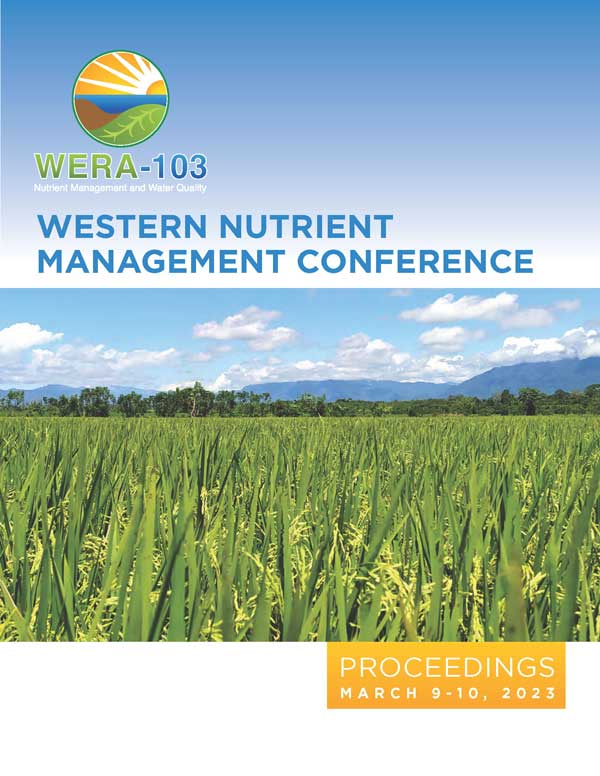Download the Conference Proceedings
Proceedings
Topics
| Filter results6 paper(s) found. |
|---|
1. Determining Lime Requirements for Idaho SoilsFor the past 25 years, northern Idaho soils have significantly shown a decline in soil pH, from pH 6.0 to around a pH of 5.6. Southern Idaho soils are mostly neutral to alkaline, with a pH of around 7.0 to 8.5, however, most agricultural soils pH is declining to pH < 4.5. Soil acidification is becoming a rising issue in soil sustainability, in which approximately 30% of the world surface is covered by acidic soils. Low soil solution pH can be induced by continued irrigation that incre... K.L. Mookodi, J. Spackman, J. Sagers, K. Schroeder |
2. Evaluating Zinc Requirements of Corn, Small Grains, and AlfalfaMany growers and crop advisors in the Intermountain west have recently reported Zn deficiencies in major cereal and forage crops. Further, many common fertilizer blends now include Zn. Most Zn fertilizer guidelines indicate that 5-10 lbs of Zn per acre should be applied when critical soil test Zn levels are less than about 0.8 ppm Zn. These guidelines in Utah and many other states in the region were developed decades ago and need to be reassessed. Therefore, we established Zn response and rat... M. Yost, M. Baker, J. Gale, G. Cardon, E. Creech |
3. Using Calcium Hydroxide for Lime Incubation Studies and Moisture Effects on LimingPlant health and productivity are negatively affected by soil acidity. Soil physical properties such as soil texture, soil organic matter, and nutrient content help soils resist changes in their acidity (buffering capacity). Soils have different buffering capacities; agricultural producers need to know how responsive a soil is to lime and how much lime is required to modify a soil to a certain pH (lime requirement). One method to evaluate soil liming requirements and buffering capacity is to ... C. Collins, E. Loera, R. Reid, J. Spackman |
4. The Effects of Calcium Source and Placement on Soil Factors and Wheat Performace FactorsWheat production is a critical component of U.S. Pacific Northwest agriculture, with approximately 80% of the global soft white wheat grain supply originating from this region. Ammonium-based nitrogen fertilizers are widely used on typically alkaline soils in Eastern Oregon dryland production areas by wheat growers. However the nitrification process that biologically converts ammonium to nitrate increases the soil concentration of H+. This process ultimately creates acidic soil conditions, wh... S. Ellickson, A. Moore, R. Zemetra, C. Hagerty |
5. The Ammonia RainbowAgriculture has been identified as a major contributor to atmospheric carbon dioxide with nitrogen fertilizer production as a key component. Recent scrutiny of nitrogen production processes has identified ammonia production processes to reduce carbon output from traditional Haber-Bosch processes. These different ammonia production processes are often described with color descriptions to designate the processes used and qualitatively identify their carbon footprint, such as “green ... A. Blaylock |
6. Optimizing Fertigation for High Value CropsIn irrigated farming systems, soluble and mobile fertilizers, such as sources of nitrogen, are often applied to crops through fertigation. Fertigation presents both opportunities and challenges. Potential opportunities include better synchronization of nutrient availability with crop demand through the growing season and potential energy savings. Challenges include the need for additional investment on infrastructure for nutrient injection into the irrigation conveyance and distribution syste... C.A. Sanchez, D. Zerihun |
